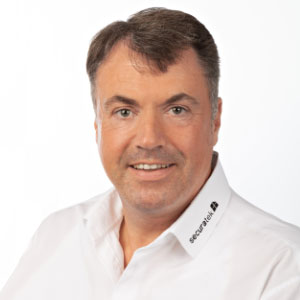This customer project involved the construction of a new paddock for horses. After extensive product consultation and exchange of information about the ground conditions, the decision was made in favor of the Ground Grid BG30. The Ground Grid made of joint-friendly, soft but still dimensionally stable LD-PE was laid by our customer in the minimal version with Geotextile and without substructure. Below is a report on the work performed and Installation of Ground Grid from our customer:
Hello Mrs. Wagner!
As just discussed by phone: here is a short summary of the paddock construction.
19.03.2015: delivery of the Ground Grid BG30
21.03.2015: pushing out and straightening of an area of 150 sqm by mini-excavators .This area was previously partially laid with grass pavers. Otherwise the subsoil was only soil.
The prepared area was NOT leveled or similar. The Geotextile TV110 vwas merely laid on the earth over which the mini-excavator had previously driven a few times for compaction.
23.03.2015: Delivery of 24.3 tons of cable sand and start of the Installation of the Ground Grid.Cable sand (also slurry sand) was used as the "substructure" for the Ground Grid. This has the advantage that it compacts very well over time and becomes very hard. The disadvantage in summer or during dry periods: since there are no large stones in the sand, it becomes quite dusty during dry periods and is also easily blown away by the wind. The sand was moved to the required location by wheelbarrow and then carefully poured onto the Geotextile, otherwise the Geotextile would slip and the sand would no longer be where it should be.
The Ground Grid were laid "floating" on a layer of about 10 to 15 cm of cable sand. It should be noted here, however, that it is advisable to compact the sand at least at the neuralgic points (shelter), since it actually gives way due to the weight of the horses and then lifts the grids accordingly. As soon as the Ground Grid were laid on the cable sand, another layer of cable sand of about 5 cm was spread.
The space for the foundations of the shelter (5 foundations) was simply left free, i.e. at these points the grids were simply left out and then continued to be built at the next point.
As a finishing touch to the paddock, Grass Grid stones were laid.
28.04.2015: Completion of the paddock, because on 30.04.2015 the third horse should come, or has come!
The mucking out and maintenance of the paddock are very pleasant and easy to handle. However, before winter, a layer of sand must again on the area of 150 square meters, because some sand was lost by the Abmisten and the removal of the sand by wind. So soon 12 to 13 tons of sand (0/4 sand) will be piled up. This 0/4 sand is heavier, i.e. it contains more coarse stones and will hopefully last longer in windy conditions.
You are planning a similar project?
You need tips for product selection or installation?
Have you used any of our products?
Then we would be pleased if you upload your reference photos!


































